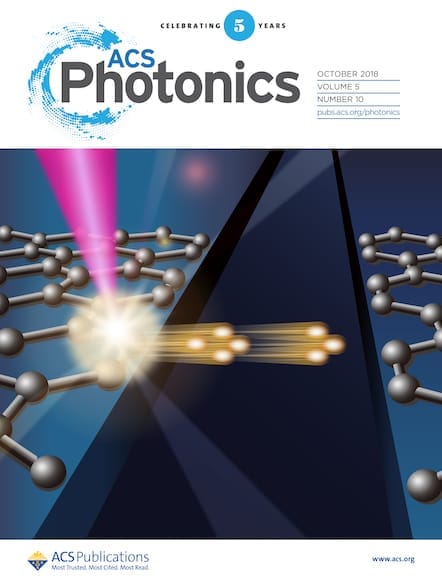Professor Harry A. Atwater, Founding Editor-in-Chief of ACS Photonics, announced in his latest Editorial that he is stepping down from his role leading the journal at the end of the month. This is a sad occasion for the journal, but it also serves as an opportunity to celebrate the journal’s achievements, which is the result […]

Professor Harry A. Atwater, Founding Editor-in-Chief of ACS Photonics, announced in his latest Editorial that he is stepping down from his role leading the journal at the end of the month. This is a sad occasion for the journal, but it also serves as an opportunity to celebrate the journal’s achievements, which is the result of a team of efforts led by Professor Atwater.
Under his leadership, ACS Photonics has grown to become one of the top journals in its field. As we say goodbye, we thought it appropriate to use Professor Atwater’s past Editorials to tell the story of the journal and how it has influenced the field.
Let There Be Light
The first issue of ACS Photonics was published in January 2014. Recognizing the field of photonics had become a more interdisciplinary field, Professor Atwater wrote in his inaugural Editorial that the journal was founded to, “embrace the scientific opportunity to bridge disciplinary gaps and promote rich cross-fertilization of knowledge between chemistry, physics, and engineering in the field of photonics.”
In that same editorial, Professor Atwater also writes about, “the internationalization of the field,” and the “worldwide recognition … of the importance of scientific advance in photonics,” as a driver for the adoption of a resolution by the United Nations General Assembly declaring 2015 the “International Year of Light and Light-Based Technologies.”
International Year of Light
Professor Atwater kicked off the second year of the journal with an Editorial in the January 2015 issue highlighting the importance of the International Year of Light. He wrote that it was “an opportunity for us to tell the rest of the world about the amazing properties of light and its potential to enrich the human experience,” while also noting that authors and contributors, “see the beauty of light and its amazing ability to probe molecular and nanoscale features, to interrogate physical and chemical processes that occur on ultrashort time scales, and to bring forth new technologies from rapid advances in science.”
In the years since, the journal has celebrated the International Day of Light by highlighting a collection of articles across many of the most important topical areas in the field.
Influence and Impact
In the time since, the journal’s influence and importance have grown. So has the Impact Factor. Additionally, the journal has ranked in the top quartile in the Optics; Materials Science, Multidisciplinary, Physics, Applied; and Physics, Condensed Matter categories according to the 2020 Journal Citation Report from Clarivate. It also ranks in the second quartile for Nanoscience and Nanotechnology.
2020 and Beyond
In the face of global lockdowns and working from home, Professor Atwater spearheaded the launch of the ACS Photonics Global Webinar Series to connect audiences around the world with leading researchers in the field. Speakers in the series include Andrea Alu, Shanhui Fan, ACS Photonics Associate Editor Jelena Vuckovic, and the 2020 ACS Photonics Lectureship winner Maiken H. Mikkelson.
Highlighting a few editorials over an eight-year span will never provide a full picture of the works published in the journal, nor the advances in the field. It does, however, provide us with an opportunity to look back and see how we got here. But also look ahead to where we are headed, as Professor Atwater does in his 20 Years of Photonics editorial. “As we enter 2021, the achievements of the last 20 years that are detailed in this issue’s Perspective papers can give us inspiration to imagine what our field will be writing about and discussing in 2040,” writes Atwater.
On behalf of ACS Publications, the American Chemical Society, and the ACS Photonics community, we thank Professor Atwater for his dedication to the journal and the field. We wish him the best in all of his future endeavors!
